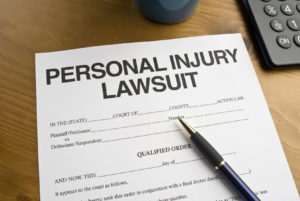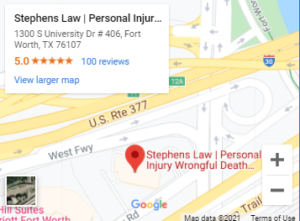Evidence in a Personal Injury Case

If you’re involved in an accident in Fort Worth, TX, you could be eligible to file a personal injury lawsuit. Obtaining the proper evidence in a personal injury case is essential for ensuring the success of your claim. Evidence helps to support your lawsuit and give your allegations credibility and weight.
During what’s called the discovery phase of a lawsuit, the parties in the case have an opportunity to ask for information from each other. This is when both sides find out all of the relevant evidence. This is often a long, complex legal process, requiring hours of investigation, digging, and action.
Filing suit and securing evidence should only be done with the help of an experienced Fort Worth personal injury lawyer. However, it helps to understand some of the most common types of evidence in personal injury cases.
Table of Contents
What Is a Personal Injury Case in Texas?
Personal injury is a broad area of law encompassing injury claims that can occur in a variety of circumstances. A personal injury case allows victims to seek compensation for injuries sustained in car accidents, slip and fall accidents, medical malpractice, and much more. Any time someone causes an accident due to carelessness, they could potentially face financial liability in a personal injury case.
What Type of Evidence is Used in Personal Injury Lawsuits in Fort Worth?
In Texas, a personal injury case typically must be filed within two years of the accident. Each type of case differs in terms of what evidence may be required to prove your case. The following are some of the most common types of evidence that can help, no matter the claim.
Video and Photographic Evidence
In this day and age, it seems everyone has a smartphone with an embedded camera in it. Any photographs or videos taken by you, family members, potential defendants, or bystanders could prove to be relevant evidence in a lawsuit.
In a car accident case, bystanders may have photographs of the accident or aftermath. In a medical malpractice case, you or your family may have a picture or video of negligent care being rendered.
Similarly, video evidence recorded by surveillance cameras could serve as evidence for your case. For example, consider the following example in a potential slip and fall case—one of the most common personal injury claims.
Suppose a grocery store employee failed to clean up a puddle or some other hazard in the store, causing you to slip, fall, and sustain injury. Grocery store surveillance footage could help prove your case if it shows that the spill had been there for a length of time.
Video could show that the grocery store staff was aware of the hazard and did nothing to address it. It could also show the extent of your fall and injury.
Personal Documentation
If you’ve been injured in a car accident or as the result of medical malpractice, documentation could prove valuable to potential personal injury claims. Of course, it’s hard to know when you need to start documenting something.
However, if you have even an inkling that your accident or injury is due to someone else’s negligent conduct, then get to writing. Start a journal or diary and draft entries contemporaneous with what you are experiencing. Document what you can as you go through medical care and follow-up care, like physical therapy. Keep all records of your doctor’s recommendations and advice.
Document how the injury has changed your life on a day-to-day basis. Any negative changes in your activities of daily living could help you support your claims for “non-economic” damages like pain and suffering.
A journal or diary could help a court or jury understand exactly how the injury has impacted your life, giving yourself even more of a voice in the suit.
Reports and Records
A variety of reports and records are used as evidence in personal injury cases. It will be a little different in every case, depending on the circumstances.
For example, if you’ve suffered the consequences of negligent medical care, you may have a medical malpractice claim. Medical malpractice cases involve securing any and all medical records related to your care.
Sometimes, these records can be shockingly voluminous, numbering in the tens of thousands of pages for a hospital stay. Regardless, these records are key in litigating medical malpractice matters. You are entitled to request your own records at any time.
However, an experienced personal injury attorney can help ensure you get all necessary records, including imaging, billing records, and more.
Not only that, but their expertise and access to special software will also allow them to parse through the volumes of records quickly and efficiently to find the key information you need to succeed in your claim.
Other types of records, such as employment records, are critical to establishing lost wages. If your injury has put you out of work, these employment records can help establish how much time you missed and how much you are owed.
Testimony by Parties and Witnesses
Testimony by the parties and potential witnesses is significant for personal injury cases. Whether in the form of a deposition or at trial, this testimony is comprised of sworn statements regarding what the witness knows about the case at hand.
This will allow you to gain more information and potential supportive testimony for your claim and damages. And, it will help give you valuable insight into how the insurance company might plan to try to fight your claim.
Investigating what evidence you need and promptly obtaining it are complex, arduous tasks. You owe it to yourself to consult with an expert in order to get the financial compensation you deserve. Contact an experienced Fort Worth personal injury attorney to understand your legal options and to help you gather the evidence you need.

